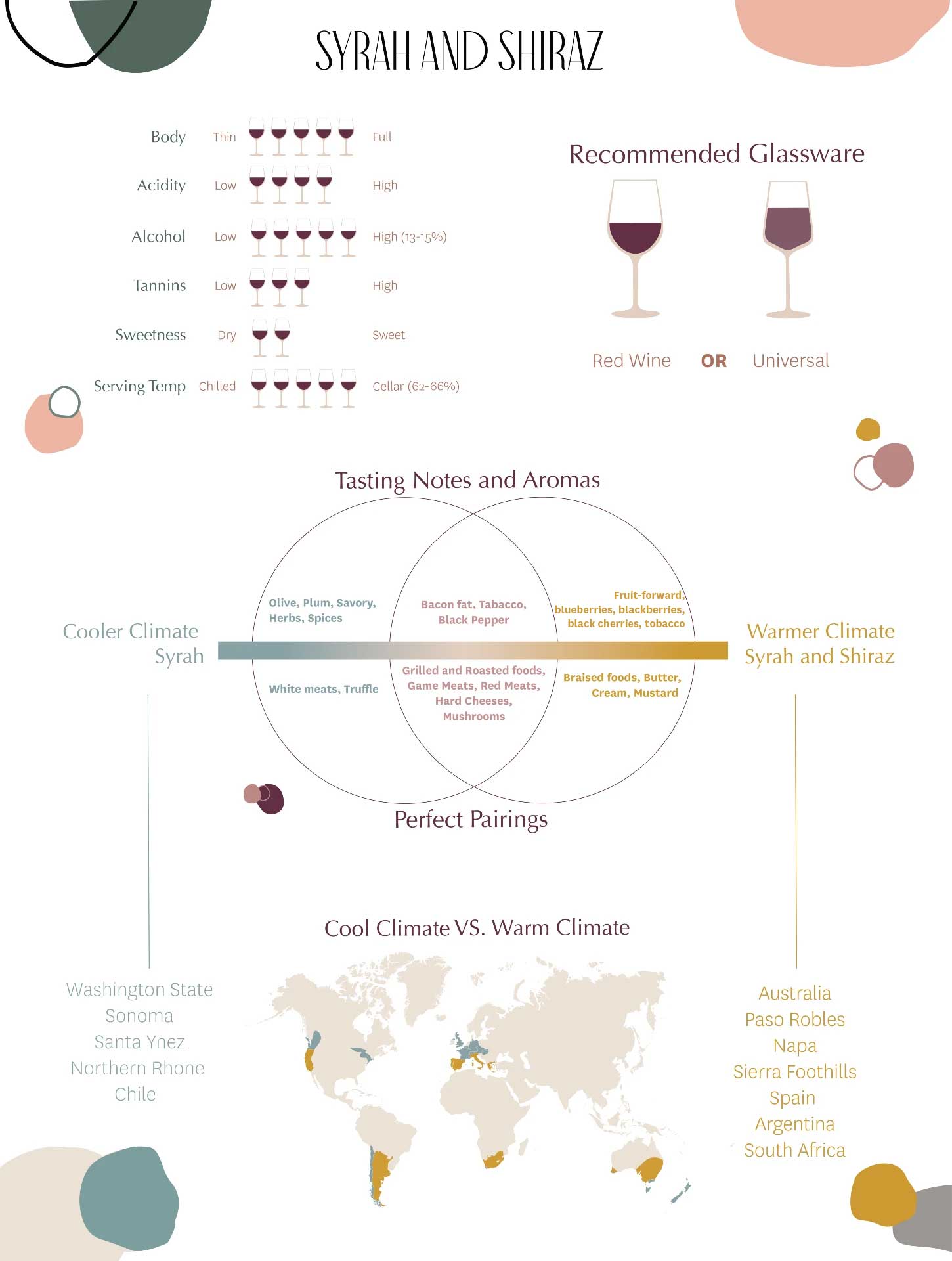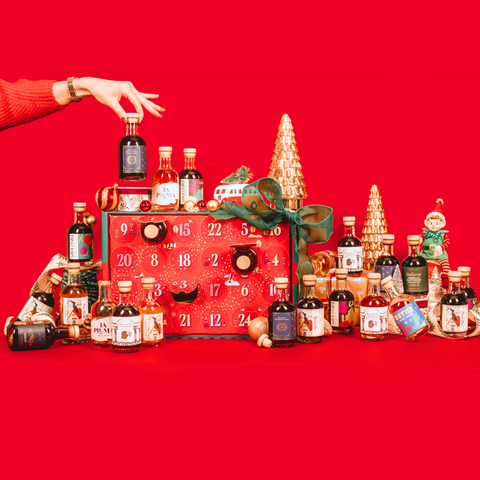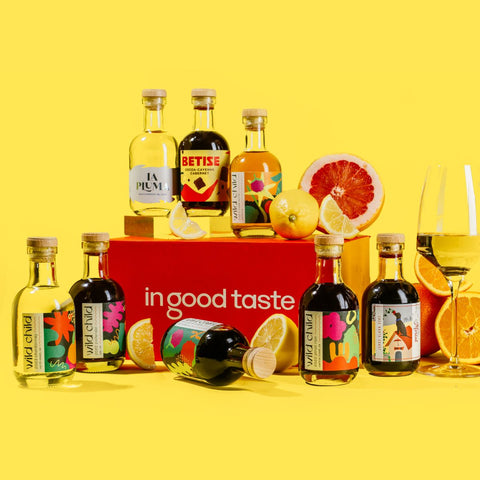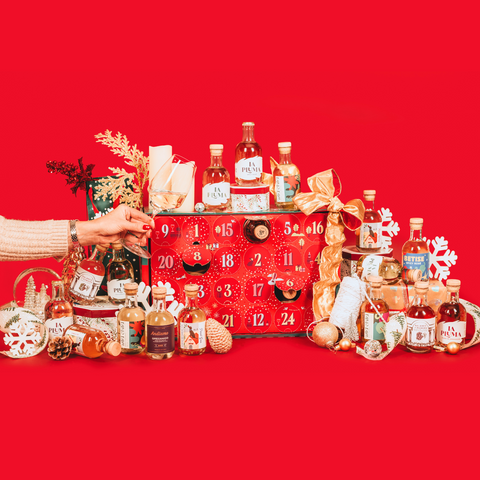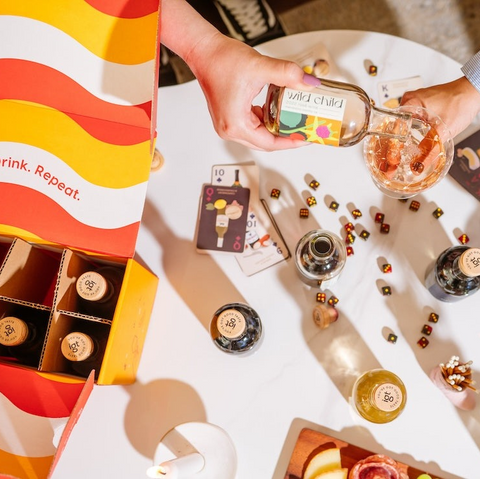By Bonnie Fine
The Syrah/Shiraz Showdown
If you’re just dipping your toe into the world of wine, a walk down the wine aisle can be intimidating – there are different countries, regions, and producers – and on top of that, there are literally thousands of wine grape varieties. To make things even more confusing, some places use different names for the same grape! A famous example of this is Syrah and its Aussie alter ego, Shiraz.
At its core, Syrah (Sih-RAH) and Shiraz (Shi-RAZ) wines are both made from the syrah grape – but that’s just about where the similarities end. Let’s break down some of the differences between Syrah and Shiraz!

Where In the World
The most basic difference between Syrah and Shiraz is where they’re from. Syrah is from France, and Shiraz is from Australia. France is both the spiritual and literal homeland of the Syrah grape. Genetic testing shows that Syrah is the love child of two French grapes, dureza and mondeuse blanche, so Syrah is by definition a French grape through and through. However, it was brought to the land down under in the 19th century by James Busby, a Scottish viticulturist who is often referred to as "the Father of Australian viticulture” and has been a major part of Australia’s wine industry ever since.
Australia may be the proverbial new kid on the block, but they’ve taken Syrah and run with it. Though it is the most planted grape in Australia, no one knows why growers started calling it “Shiraz” instead of “Syrah” (accident, accent, just a fun little switcheroo?) Today, in an effort to differentiate themselves from the French style of Syrah, they’ve “rebranded” their wine made from the Syrah grape to “Shiraz.”
While it was first brought to the Hunter Valley and is now grown all over Australia, the Barossa Valley near Adelaide has become prime real estate for Shiraz. It makes up 40% of Australian wines, so it’s no surprise that it is the primary grape in some of the most famous (read: expensive!) Australian wines, like Penfolds Grange (a single, well-aged bottle can run you upwards of $500).

Meanwhile, French Syrah is most commonly found in the Rhône region, a few hours south of Burgundy. France doesn’t typically label wines with the grape variety. Instead, they do this based on where they are from, or their “appellation,” and leave it up to you to know what grape that is. In the Northern Rhône, you’ll see wines made from 100% Syrah – Hermitage, Cornas and Côte Rôtie, for example. In the Southern Rhône, Syrah is often blended with Grenache and Mourvèdre, such as in Côtes du Rhône or Châteauneuf-du- Pape. France is still the leading producer of Syrah in the world, especially as higher-producing regions, like Languedoc-Roussillon in Southwest France, gain popularity with wine drinkers all over the world.
Syrah and Shiraz Are Styles of Wine
Now it may be tempting to think that all Syrah comes from France, and all Shiraz is Australian, but unfortunately, it's not that simple. Syrah grows all over the world, from France to Australia, and everywhere in between. Some countries of note, now making waves with Syrah are: New Zealand, South Africa, Chile, and the U.S. A winery might label a bottle “Shiraz” to indicate that the wine inside is a ripe, rich, fruit-forward wine made in the Australian spirit. Likewise, it might label the bottle “Syrah” to indicate an “Old World” (read: European) style wine that is more savory and austere. At this point, the names have gone from an indication of origin to an indication of style.
There are other wine producing regions that make Syrah including New Zealand (cooler climate), South Africa (warmer climate), and California (depends on where in California…). These places will typically match their wine label to their climate – Syrah for cooler climates; Shiraz for warmer.
As if things aren’t already confusing enough, in recent years, some wineries in Australia have begun labeling their Shiraz as Syrah, if the style they crafted is closer to the Rhône Valley Syrah. And even some French wineries are labeling their Syrah as Shiraz, if they produce a style more similar to that of the Aussies.

All Wine Made from Syrah Grapes Will Taste the Same?
No matter where it comes from, there are some core varietal characteristics that won’t change based on country or climate. Whether it’s called Syrah or Shiraz, you can expect your wine to have this basic flavor profile: dark fruits (read: blueberries and blackberries), medium to high tannins, a peppery/spicy flavor, and a dry finish. This black pepper flavor is due to a naturally occurring chemical in the Syrah grape called rotundone. It’s also found in rosemary, thyme, and…black peppercorns!
Another similarity is in the winemaking process. Because the Syrah grape has thick skins and can produce high tannins, winemakers around the world will cold soak the grapes for days (sometimes weeks!). This process of cold soaking the grapes increases the color and fruitiness in the wine while reducing the harsh tannins. While this is done around the world, and with many different varieties, for the purpose of our Syrah/Shiraz showdown, it’s more common and usually done for a longer period of time with Shiraz.
This, my friends, is where the similarities end.
Flavor Notes of Syrah vs. Shiraz
French Syrah will typically emphasize the natural herbaceous quality of the grape, with the fruit flavors taking a backseat. Syrah from the Northern Rhône will usually combine flavors of blackberries, cherries, and blueberries with a more floral bouquet and a savory palate (black pepper, olives, cured meats). Northern Rhône Syrahs typically have a leaner body – the tannins aren’t going to be plush and velvety but rather sharp and austere. Syrah blends from the Southern Rhône will be a little more well-rounded, with a nice balance of red and black fruits to complement the peppery notes.
Australian Shiraz, on the other hand, is typically more full-bodied (read: higher alcohol!), ripe, and concentrated. This in-your-face, fruit-forward wine matches the Australian personality – incredibly friendly, blunt, and just plain fun! You won’t ever have to search for flavors in a Shiraz; they will announce themselves loudly to you – blueberries, blackberries, black cherries – often aged in a little new oak to add a richness that will balance out the natural pepperiness.

Why do Syrah & Shiraz Taste So Different?
This one’s easy – the climate! I wish it was as easy as Australia is HOT, and France is NOT…but it’s not quite that simple!
Warm climates allow grapes to ripen faster and develop more sugar (which later is turned into alcohol), and typically give wines a fruitier flavor. But if it’s too hot, all the acid will cook out of the grapes, and the wine will taste “flat,” which is not ideal.
The Rhône valley, home to much of the world’s great Syrah, is more of a continental climate – hot in the summer, cold in the winter. But they have a secret weapon. Le Mistral is a force of nature (literally): a strong, cold wind that races through the vineyards, cooling the vines down. This wind is so strong, it can strip the grapes right off the vines! When it’s not wreaking havoc, it’s drying off the grapes so they don’t develop mildew and cooling them off so they don’t get too hot.
Down Under, in the Barossa Valley, temperatures are warm pretty much year-round, so the grapes develop those rich fruity flavors. Luckily, temps drop a little at night, preserving that all-important acidity.
There’s one other major factor that will determine what your Syrah or Shiraz will taste like – oak! In the French Rhône Valley, Syrah is typically aged in large oak “foudres.” These are extra-large oak barrels that can hold up to 1,000 liters of wine (that’s about 1,300 bottles of wine or 2,600 In Good Taste wine flight kits!). At that size, the oak isn’t there to impart strong oak flavors; it’s there to allow some oxygen to permeate the wine. These giant foudres are naturally porous, so they allow the wine to breathe and develop more secondary characteristics before bottling. While there is no guarantee that a Syrah will be oaked in this way, it is more common than not to see Syrahs that have been aged in a neutral oak barrel.
In Australia, and other parts of the New World, Shiraz is aged in smaller oak barrels, with the intent of delivering more vanilla and baking spice notes to the wine without overpowering the lush fruit flavors. Australians are a little more flexible with their wine traditions, so there’s no guarantee that your Shiraz will see oak.

What Foods Pair Well with Syrah or Shiraz?
The flavor profile of the wine will guide you towards what to pair it with. A fruitier style of Shiraz will go best with burgers, ribs, or anything on the grill – nothing too fancy! An herbaceous, peppery style of Syrah will go well with lamb, duck, and other gamey meats.
There is a lot of crossover in flavor, so you really can’t go wrong! The only pairings to avoid would be super-light dishes that would be overpowered by the bold flavors of the Syrah – light fish dishes and salads, for example.
So they are the same grape, with different names, that will probably taste different depending where it’s from?
That's right! Congrats, you are now an expert in Syrah (or Shiraz)!
